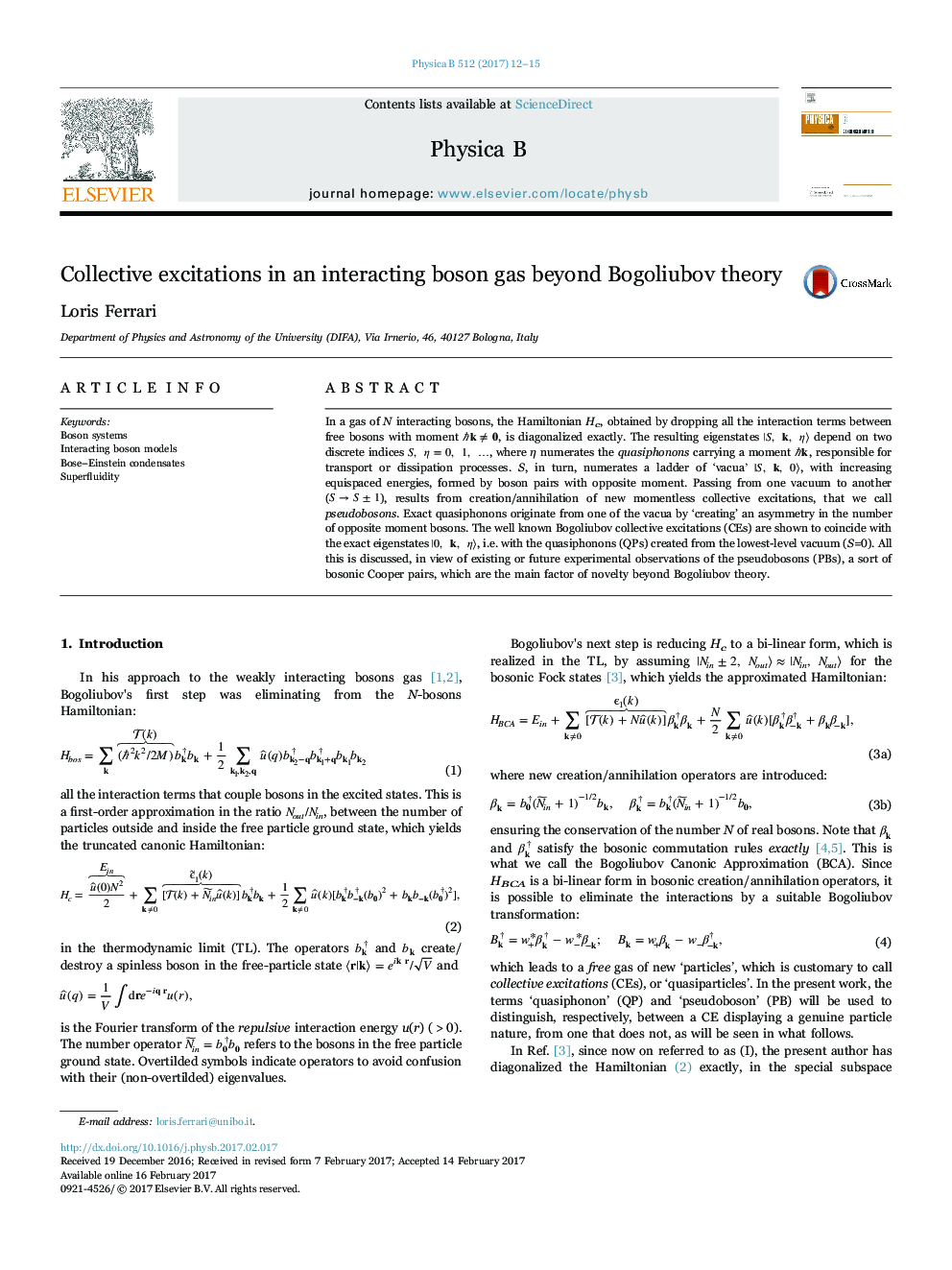| Article ID | Journal | Published Year | Pages | File Type |
|---|---|---|---|---|
| 5492028 | Physica B: Condensed Matter | 2017 | 4 Pages |
Abstract
In a gas of N interacting bosons, the Hamiltonian Hc, obtained by dropping all the interaction terms between free bosons with moment âkâ 0, is diagonalized exactly. The resulting eigenstates |S,k,ηã depend on two discrete indices S,η=0,1,â¦, where η numerates the quasiphonons carrying a moment âk, responsible for transport or dissipation processes. S, in turn, numerates a ladder of 'vacuaʼ |S,k,0ã, with increasing equispaced energies, formed by boson pairs with opposite moment. Passing from one vacuum to another (SâS±1), results from creation/annihilation of new momentless collective excitations, that we call pseudobosons. Exact quasiphonons originate from one of the vacua by 'creating' an asymmetry in the number of opposite moment bosons. The well known Bogoliubov collective excitations (CEs) are shown to coincide with the exact eigenstates |0,k,ηã, i.e. with the quasiphonons (QPs) created from the lowest-level vacuum (S=0). All this is discussed, in view of existing or future experimental observations of the pseudobosons (PBs), a sort of bosonic Cooper pairs, which are the main factor of novelty beyond Bogoliubov theory.
Related Topics
Physical Sciences and Engineering
Physics and Astronomy
Condensed Matter Physics
Authors
Loris Ferrari,
